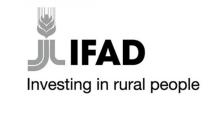Resource information
This article offers a general picture of the situation of rural youth in Latin America and the Caribbean(LAC). The population is described through its demographic dynamics, its socio-economiccharacteristics, the situation of priority groups (women and indigenous peoples) and subjects ofinterest for these particular population groups (use of IT, sexual and reproductive health, violence andsocial participation).
The available data regarding these dimensions are presented noting the existinggaps, both about urban youth and about adults, and contrasting the data with the available literatureon youth in the region.From the results, it is worth noting that the region’s youth represents a heterogeneous group, althoughone with common characteristics that sets it apart as a group of interest. Particularly, it can be seenthat there are still gaps between rural and urban youth in the areas of poverty, education andworkforce integration in every country, although with important differences between them.
Thus,ruralyouth appear to be an especially vulnerable group, a situation that is aggravated in women,indigenous people and Afro-descendants. The lack of opportunities in rural areas causes this group to migrate to cities in larger proportions than adults, which has important consequences for their places oforigin.As recommendations, we propose the introduction of the gap closure approach into the analysis, withparticular emphasis on the new roles and the economic, social and political weight of younger ruralwomen, recognizing the importance and implications of the ever-growing indigenous composition ofthe populations in LAC.
Likewise, it is vital to advance the production of data that are disaggregated ona subregional scale and by age groups, which allowus to generate specific information and to developpublic programmes and policies that are relevant, with a territorial and rights approach, and thatcontribute to closing gaps and ensuring equality and opportunity for all of the region’s youth



